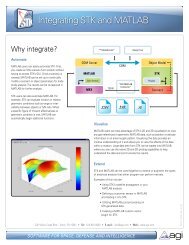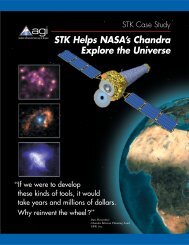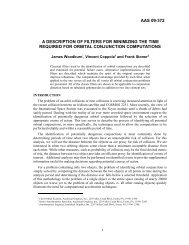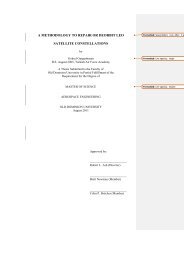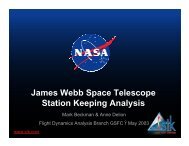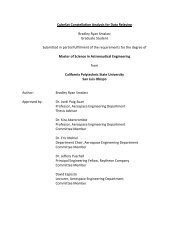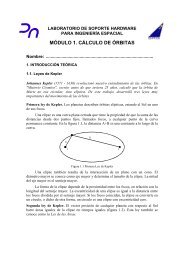SPACE WEATHER - AGI
SPACE WEATHER - AGI
SPACE WEATHER - AGI
- No tags were found...
Create successful ePaper yourself
Turn your PDF publications into a flip-book with our unique Google optimized e-Paper software.
Section II: Radiation Effects© SSS Educational Series 2012Effects are divided into stochastic (e.g. cancer induction) where probability is afunction of dose and non-stochastic (e.g. eye cataracts) which definitely occurbeyond a threshold dose. Individual highly ionising particles can give light flashes inthe retina.Currently human exposure is limited to Space Shuttle and International Space Stationorbits for which trapped protons in the SAA are a major concern. Heavy ions incosmic rays and occasional solar particle events are also of concern, while electronscan be important for extravehicular activity. In large space structures, secondaryneutrons become very significant and can provide a third of the dose equivalent forcertain missions [8, 9]. For interplanetary travel, cosmic-ray ions and solar particleevents are most significant and very large solar events could provide debilitatingdoses if inadequate shielding is provided.Important issues include:• Determination of quality factors;• Microdosimetric calculations at the cell nucleus level, both for heavy ions (trackstructure important) and for nuclear interactions by neutrons and protons;• Accurate shielding calculations to account for fragmentation of heavy ions andproduction of secondary neutrons.A review of this area has been given by Reitz et al [10].3.1.5 Background NoiseSpurious counts are produced in many detector systems and these depend on thesize distribution of individual depositions and can occur from both prompt ionisationand delayed depositions due to induced radioactivity [5].3.2 PlasmaPlasma is ionised gas in which electron and ion densities are approximately equal.The solar wind particles (positively charged ions and free electrons) ejected from theSun could be so hot that they are homogenised into a dilute plasma. The electricallyneutral plasma streams radially outwards from the Sun with temperatures up tohundreds of keV. The energy density of the plasma (about 1 to 30 particles/cm 3 )exceeds that of its magnetic field so that the solar magnetic field lines are frozen intothe plasma. In the geosynchronous environment, about 100% of the chargedparticles are ionised. This fraction reduces to about 1% at 300 km altitude.14



